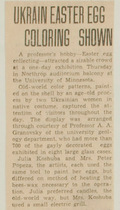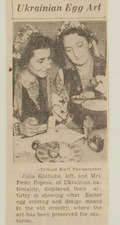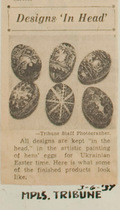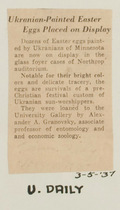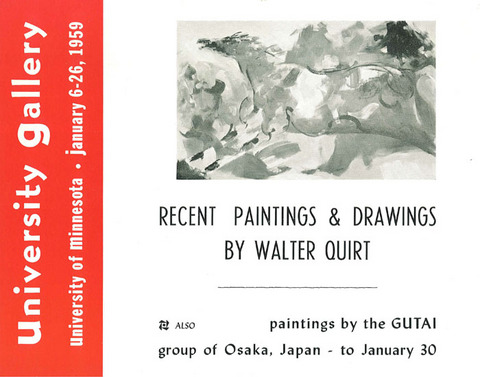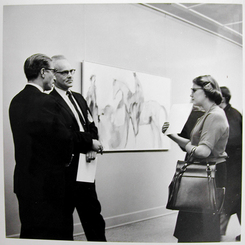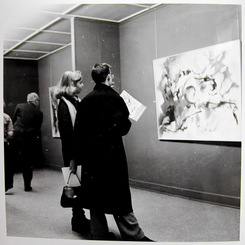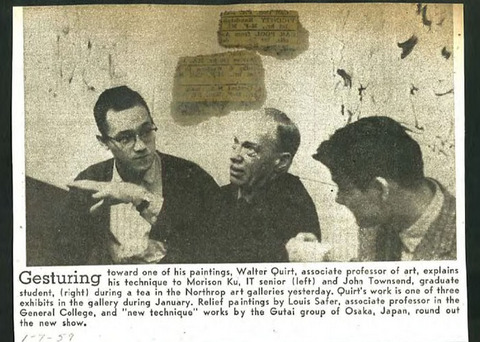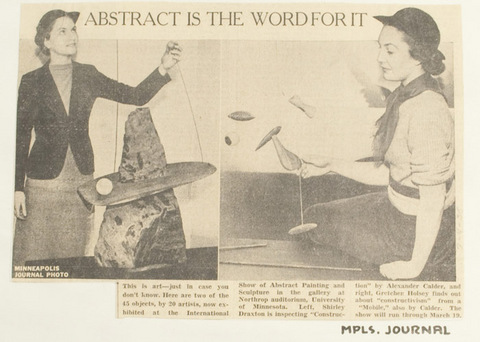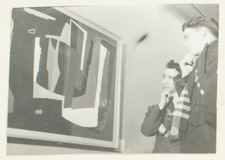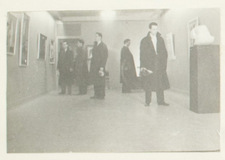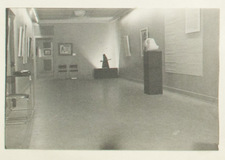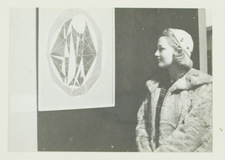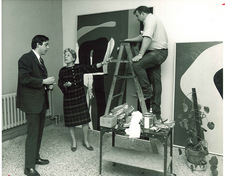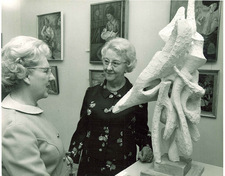The following image, titled, “Still Life” was found on a University Gallery Press book page along with newspaper clippings related to the opening of the Fine Arts Room at the University Gallery in February of 1936:
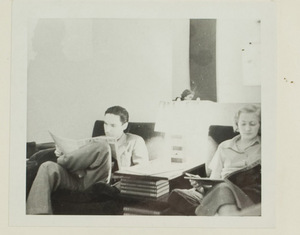
The Fine Arts Room, established by Ruth Lawrence and Malcolm Willey, was created with the intent of stimulating interest in fine arts amongst the University student population. As Willey indicated in a January 29, 1936 article in the MN Daily, “This new art room, distinctly American and modern in its conception, is being specially decorated in simple but excellent taste. Here will be placed a few well selected books and magazines in fine art, but nothing for formal study, which will be prohibited.“
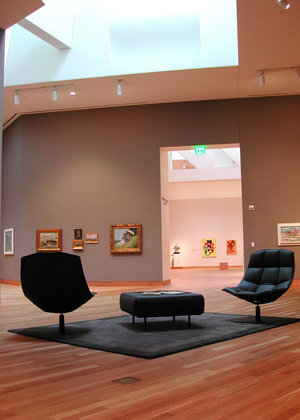 Art imitates history… as on the last few days of February 2012, WAM staff set up some furnishings in one of their new galleries – the Woodhouse Family Gallery. Incidentally, this gallery is “distinctly American and modern in its conception,” as it prominently features the museum’s collection of the works of artists Alfred Maurer and Marsden Hartley. Next to the furnishings, staff also “placed a few well selected books in fine art,” for visitors to read at their leisure.
Art imitates history… as on the last few days of February 2012, WAM staff set up some furnishings in one of their new galleries – the Woodhouse Family Gallery. Incidentally, this gallery is “distinctly American and modern in its conception,” as it prominently features the museum’s collection of the works of artists Alfred Maurer and Marsden Hartley. Next to the furnishings, staff also “placed a few well selected books in fine art,” for visitors to read at their leisure.
While formal study in the Woodhouse Gallery is not prohibited per say – the intent of the new furnishings is to create a simple – but excellent – atmosphere in which to look at… and learn about… art.
